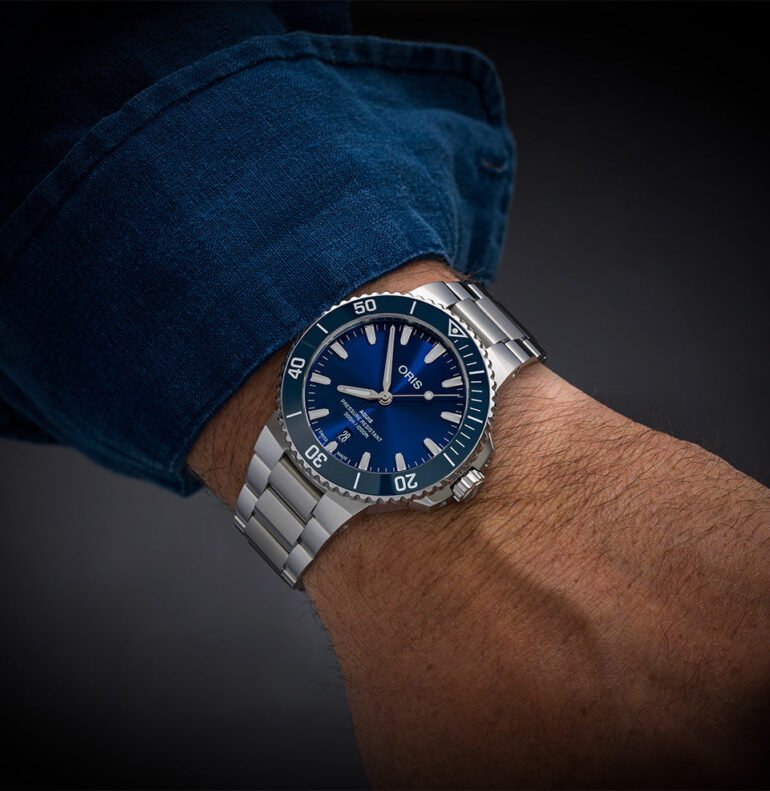Founder Georges Christian died in 1927. His brother-in-law, Oscar Herzog, joined as general manager the following year and stayed at the helm until 1971. This period also saw a managerial role taken by Jacques-David LeCoultre, grandson of Antoine LeCoultre, who is perhaps best known for his role in merging LeCoultre with Edmond Jaeger’s Parisian watchmaking company in 1937.
Oris’ interwar growth was marred by the 1934 introduction of the Swiss Watch Statute. A law designed to protect and regulate the industry, it paradoxically trapped brands from innovating due to a built-in clause requiring companies to seek government approval before introducing new horological technologies. Due to this, Oris — who has been using the Roskopf pin-lever escapement — was trapped from experimenting with the more sophisticated lever escapements that would come to dominate the industry. Not ones to be backed into a corner, they decided to lean further into it. By 1934, they produced their first in-house caliber, the first of several the brand would produce.
The 1930s also saw the launch of one of Oris’ most beloved and longest-lasting models — the Big Crown. Originally introduced as a pilot’s watch in 1938, its unique pointer date complication, large crown, and legible dial were purpose-built for aviators in the interwar period. Unfortunately, its success would be overshadowed by events to come. The onset of the Second World War saw the brand’s distribution channels dry up. Adapting to the changes as they always had, Oris began producing alarm clocks. In 1949, they introduced a movement with an eight-day power reserve that would bring widespread attention to the brand.

The postwar period brought with it many changes. Oris decided that the Watch Statute of 1934 should be among them. In 1956, Herzog hired a young lawyer, Dr. Rolf Portman, to lead a campaign for its reversal. It would take ten years, but in 1966 they finally succeeded in convincing the government to gradually loosen their restrictions before it was finally abolished in 1971. Oris didn’t waste any time. In 1968, they released their own lever escapement, pushing three decades of innovation forward within just two years. The Calibre 652 became their first certified chronometer. By the end of the 1960s, Oris ranked among the top ten largest watch companies in the world, producing 1.2 million watches and clocks annually, building its own tools and machinery, and training 40 engineers and watchmakers through an in-house apprentice system.
It wasn’t enough. Global changes in the watch world forced Oris to reevaluate its longstanding role as an independent manufacturer. Leveraging the idea of strength through numbers, the company joined ASUAG — the forerunner of the SWATCH Group — in 1970 and their production figures and staff numbers dropped. It wasn’t the right fit. In 1982, now-Managing Director Portman and Head of Marketing Ulrich W Herzog led a management buy-out of Oris that restored its independence as a watchmaker. The re-launched Oris SA rejected quartz technology and decided to focus solely on mechanical movements, despite market trends to the contrary.
Oris ended the century strong. In 1991, they introduced the Calibre 581, the most complicated movement they had ever produced. An in-house team went so far as to develop a moon phase module for the caliber. In 1997, they expanded their lineup further with the launch of their first-ever worldtimer.
Jacob Van Buren
2025-09-28 16:00:00

